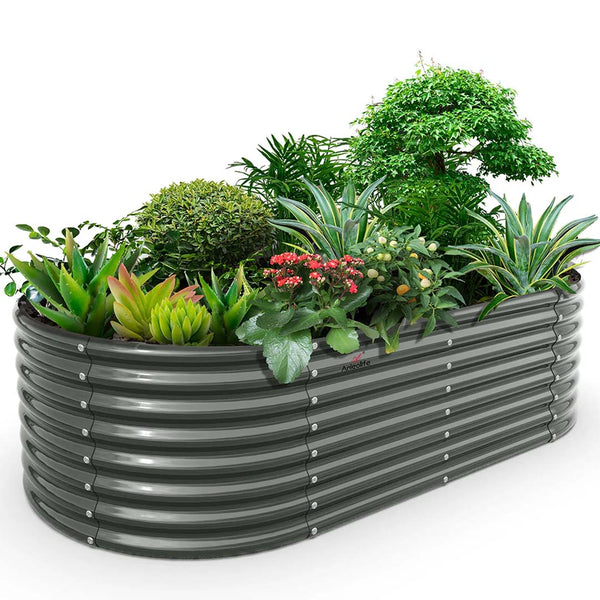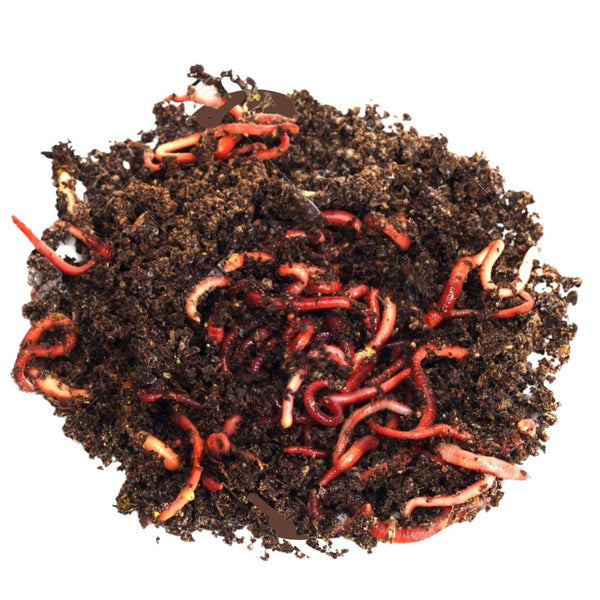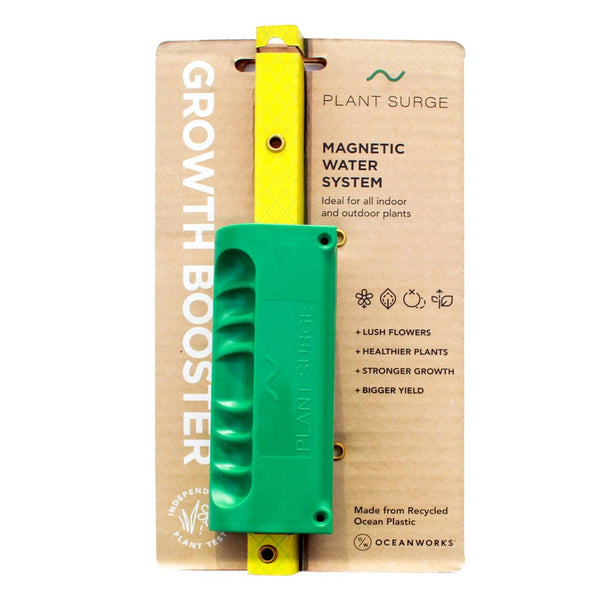The Secret Electroculture Antennas That Commercial Farmers Are Quietly Installing

Understanding Electroculture Gardening
Basics of Electroculture
Electroculture is a nifty gardening trick that uses electricity to give plants a little extra pep in their step. Imagine zapping your garden with a bit of juice to make it grow better. Sounds wild, right? But it's not just a sci-fi fantasy. This idea has been around since the late 1800s and early 1900s when folks noticed that plants seemed to thrive after a good thunderstorm.
By tapping into the natural energy floating around us, electroculture antennas can boost plant health, making them stronger and more robust. This method is a hit with everyone from health nuts living off the grid to city dwellers who want to keep their gardens green without using chemicals.
Historical Background
Electroculture's story goes way back to the late 1700s. Early experimenters like Bernard-Germain-Étienne de La Ville-sur-Illon and Abbé Pierre Bertholon were the first to play around with this electrifying idea. Things really picked up in the 1840s, especially after the "earth battery" was invented in 1841, proving that electricity could indeed help crops grow better (Agtecher).
Over time, different ways to set up electroculture antennas have popped up, each trying to make the most of this technique. As we dig into what electroculture gardening can do, it's cool to see how far it's come and what it could mean for today's gardeners who want to get the most out of their plants.
For more tips on how to get started with these techniques, check out our articles on electroculture gardening and electroculture antennas.
Benefits of Electroculture Antennas
Electroculture antennas are like the secret sauce for your garden, giving plants a little extra oomph by tapping into atmospheric energy. They boost plant toughness and soil goodness, making them a gardener's best buddy.
Increased Plant Resilience
One of the coolest things about these antennas is how they make plants tougher. Studies show that electroculture can help plants fight off diseases, pests, and even handle rough weather. The tiny electric buzz from the antennas kicks the plant's defenses into high gear, like a natural immune booster.
| Benefit | Description |
|---|---|
| Disease Resistance | Plants get better at fighting off sickness. |
| Pest Resistance | Natural defenses mean fewer bugs. |
| Environmental Stress Tolerance | Plants handle drought and crazy weather better. |
With this extra toughness, plants stay healthier even when conditions aren't perfect, cutting down on the need for chemicals and letting us grow food in a more earth-friendly way.
Enhanced Soil Fertility
Electroculture antennas also jazz up the soil. They get the good microbes in the dirt partying, which is great for nutrient flow and soil health.
| Soil Benefit | Description |
|---|---|
| Microbial Activation | More good microbes mean better nutrient access. |
| Nutrient Cycling | Organic stuff breaks down better, enriching the soil. |
| Soil Ecosystem Balance | A lively soil scene supports plant growth. |
Using metals like copper, brass, and zinc in these antennas can make them even more effective. These materials not only boost soil quality but also keep the soil's magnetism in check, which is key for holding onto nutrients.
By adding electroculture antennas to our gardening toolkit, we can grow stronger plants and healthier soil, leading to bigger and better harvests. For more tips on getting started with these antennas, check out our guide on electroculture gardening.
Implementing Electroculture Antennas
To get the most out of electroculture gardening, we gotta dive into setting up those electroculture antennas. It's all about picking the right stuff and making sure everything's set up just right.
Choosing the Right Materials
The magic of our electroculture antennas is all in the materials we pick. We’re talking about copper, brass, bronze, and zinc. These guys are champs at boosting the soil's magnetic mojo and giving our plants a leg up.
| Material | Benefits |
|---|---|
| Copper | Keeps the soil nice and moist, making plants beefier. |
| Brass | Gives the soil a quality boost and gets those microbes partying. |
| Bronze | Tough as nails and conducts like a pro. |
| Zinc | Helps shuffle nutrients around, making plants happy. |
Copper wire, for example, can whip up atmospheric antennas that tap into the earth’s energy, making plants healthier and keeping the soil nice and damp (Amazon). And don’t forget about the antenna design. Lining them up north-south can really get that natural electromagnetic energy flowing, which is key for getting the most out of electroculture.
Installation and Setup
Once we’ve got our materials, it’s time to get down to business with installation and setup. Here’s what to keep in mind:
Placement: Stick that conductive material in the soil where it can do its thing with the earth's energy and boost the soil's magnetic vibes.
Depth: Make sure the antenna is deep enough to hit the soil's moisture sweet spot, which cranks up its effectiveness.
Spacing: If you’re going with more than one antenna, give them some room to breathe so the energy flows right and they don’t mess with each other.
Maintenance: Keep an eye on those antennas for any rust or wear, especially if you’re using copper or brass, which can wear out over time.
Height Adjustment: For raised beds or container gardens, think about using adjustable height models to get the antennas just right for max benefits.
By sticking to these tips, we can nail the electroculture antenna setup in our gardens. This not only boosts plant growth but also makes the soil healthier, making our gardening game strong and sustainable. For more on the perks of electroculture, check out our article on electroculture gardening.
Science Behind Electroculture
Getting the lowdown on electroculture lets us see how these nifty gardening tricks can shake up our growing game. By tapping into nature's energy, we can boost plant health and toughness.
Electrical Stimulation Effects
Electroculture antennas are like magic wands made of copper, zinc, and brass, connecting with the earth's energy. Stick these bad boys in the dirt, and they jazz up the environment, cranking up magnetism and sap flow in plants. This can lead to beefier plants and better moisture hang time in the soil.
The electrical buzz also wakes up the tiny critters in the soil. Good bacteria and fungi thrive in this charged-up space, doing their thing with nutrient cycling and soil fertility. It's like a party for the soil, keeping plants happy and healthy.
| Effect | Description |
|---|---|
| Increased Magnetism | Makes nutrients more available in the soil. |
| Improved Sap Flow | Builds stronger, healthier plants. |
| Activated Microbial Activity | Creates a balanced soil party. |
Impact on Plant Health
Electroculture isn't just about soil; it's a whole plant makeover. Plants getting a jolt from electrical stimulation show off their superpowers against diseases, pests, and stress. The electric vibe kicks the plant's defense into high gear, beefing up its immune system and making it tough against rough conditions.
Plus, atmospheric antennas are like plant bodyguards, fighting off frost, heat, and pests, while boosting yields. With a better growing setup, we can look forward to healthier, tastier fruits and veggies.
| Benefit | Description |
|---|---|
| Disease Resistance | Pumps up plant immune systems. |
| Pest Reduction | Keeps nasty bugs at bay. |
| Enhanced Yields | Cranks up food production. |
By weaving electroculture into our gardening routine, we can score a sustainable and savvy way to grow. This method not only feeds our craving for chemical-free grub but also backs our goals of self-sufficiency and standing strong against unpredictable growing conditions. For more tips on getting started, check out our articles on electroculture gardening and electroculture antennas.
Practical Applications of Electroculture
Electroculture gardening is catching on with folks who love their gardens, whether they're health nuts living off the land or city dwellers trying to keep it green. These antennas are proving their worth, showing off their perks in everyday gardening.
Case Studies and Results
Loads of studies and stories from gardeners show electroculture's magic in boosting crop yields and cutting down on resources. Research says it can bump up yields by 20% and slash water use by half. That's a win-win for anyone wanting to get the most out of their garden without breaking the bank.
One gardener shared how her water bills took a nosedive after she switched to electroculture. Her plants were thriving with hardly any nutrients needed, proving this method is a friend to both our plants and our wallets.
| Benefit | Result |
|---|---|
| Crop Yields | Up to 20% increase |
| Water Usage | Up to 50% decrease |
| Plant Resistance | Better fight against diseases and pests |
Sustainability and Cost-Effectiveness
Electroculture antennas fit right in with eco-friendly gardening. They boost soil health and help plants soak up nutrients, letting us cut back on chemical fertilizers and pesticides (Agtecher). This means healthier gardens and a happier planet.
Another big plus is how electroculture wakes up the good stuff in the soil. It gets the bacteria and fungi working hard, creating a lively soil scene that keeps plants in tip-top shape. This natural way of gardening helps us dodge the pricey synthetic stuff, saving us money over time.
| Sustainability Aspect | Benefit |
|---|---|
| Chemical Use | Less need for fertilizers and pesticides |
| Soil Health | Boosted microbial activity and nutrient flow |
| Cost Savings | Lower gardening costs thanks to fewer inputs |
In short, electroculture antennas are showing us a new way to garden. They help us grow more, use less, and keep things sustainable. For those of us wanting to up our gardening game, electroculture is a promising option. Dive into more about how electroculture can change our gardens by checking out our articles on electroculture gardening and does electroculture work.























